At a birthday party last weekend, a seafood salad was among the dishes served. The salad consisted of shrimp, calamari, mussels, and octopus, mixed with carrots, celery, and fennel and dressed with olive oil and lemon.
The guests, a mix of Italian natives and Americans, were divided on whether they liked it. Vehemently divided, I should say. The most offensive ingredient was the octopus. Either people loved it or were disgusted by it. For many, it was a texture thing. The suction cups are hard to get past, they explained.
We happen to love octopus, and happily dug into the seafood salad. Giuseppe, our friend and creator of the salad, reached over and slid the plate toward the end of our table, saying, “tanto, quelli non lo mangiano.” They aren’t going to eat it anyway.
The salad must have served as a teaser, because when I walked past the seafood counter at Whole Foods this week and saw fresh octopus, I stopped. “I’ll have two octopuses,” I told the fishmonger. “Octopuses, octopi, octopedes…?” I thought to myself. Whatever the correct plural form, I wanted a few.
Usually, we make a fresh insalata di polpo. Sometimes we make polpo con le patate, and other times we grill the tentacles or make pasta with sugo di polpo. This time, Stefano suggested we make polpo alla Luciana.
According to tradition, polpo alla Luciana originated in the seaside Santa Lucia neighborhood in Naples, where freshly caught octopus was cooked with cherry tomatoes, olives, and capers, yet another example of local, humble ingredients turning into a delicious meal. Be sure you have plenty of bread to fare la scarpetta, or soak up the delicious sauce.
Ingredients
4 servings
2 octopuses
Extra virgin olive oil
2 cloves of garlic
300 g (3 dozen approx) cherry or grape tomatoes
200 g (1-1/2 cups approx) Gaeta olives
60 g (1/3 cup approx) capers, drained and rinsed
1 jar (700 g or 24.5 oz approx) tomato puree
Italian parsley
Salt
Instructions
Rinse the octopus and set them aside.
Add several tablespoons of olive oil into a large pot.
Slice the garlic in half, remove and discard the germ in the center, and add the garlic to the pot.
Add the tomatoes to the pot whole, along with the olives and the capers.
Gently sauté the garlic, tomatoes, olives, and capers for about 5 minutes.
Add the tomato puree.
Fill the empty tomato puree bottle about 1/2 full with water, put the lid back on, shake it to integrate the remaining puree inside the bottle, and add the liquid to the pot.
Stir, add salt to taste, and bring the sauce to a boil over medium-high heat.
When the sauce boils, add the octopus, cover, reduce the heat to the lowest setting, and allow the octopus to gently simmer for 45 minutes, stirring occasionally.
Remove the cover, taste for salt, and cook for 15 more minutes, allowing the sauce to reduce.
Serve with a garnish of flat-leaf parsley and plenty of crusty bread to soak up the sauce.
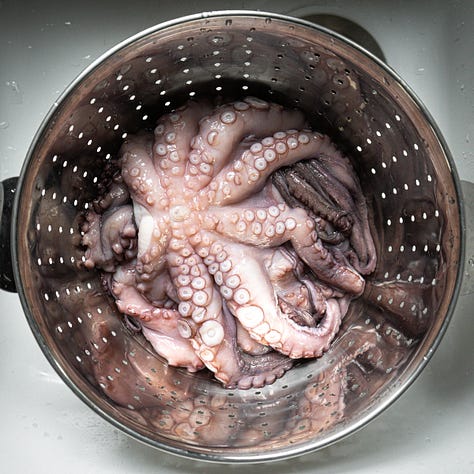
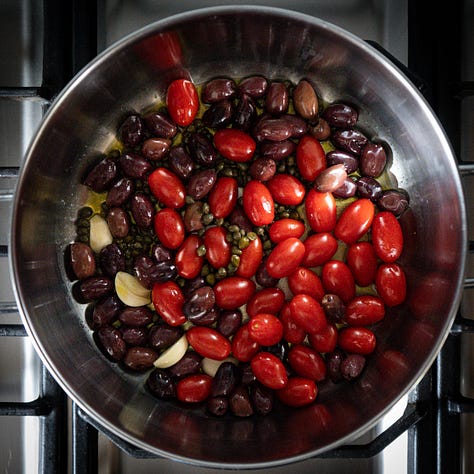
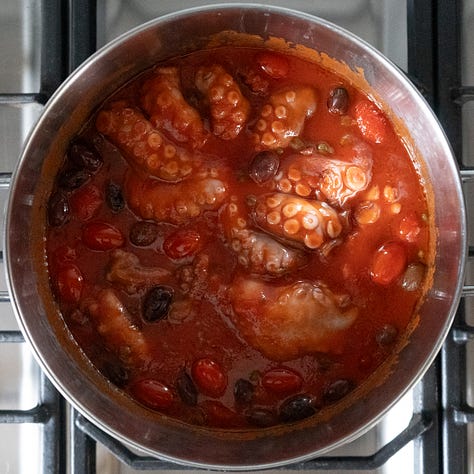
Notes
Our preferred tomato puree is Mutti’s Passata di Pomodoro.
Make the effort to find Gaeta olives. Several online vendors sell them, including Supermarketitaly.com and Cento. The internet will tell you that you can substitute Kalamata for Gaeta olives, but in our experience, they give the dish a more aggressive, bitter flavor.
Like Stefano did, feel free to use the sauce to make pasta. Paccheri are particularly suitable.
You may also like…
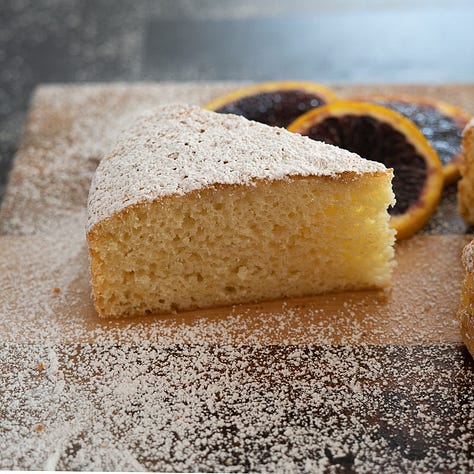

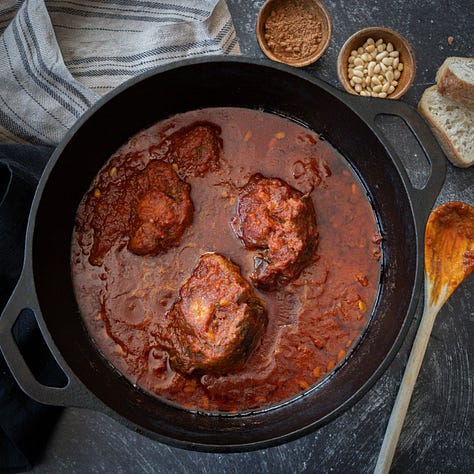






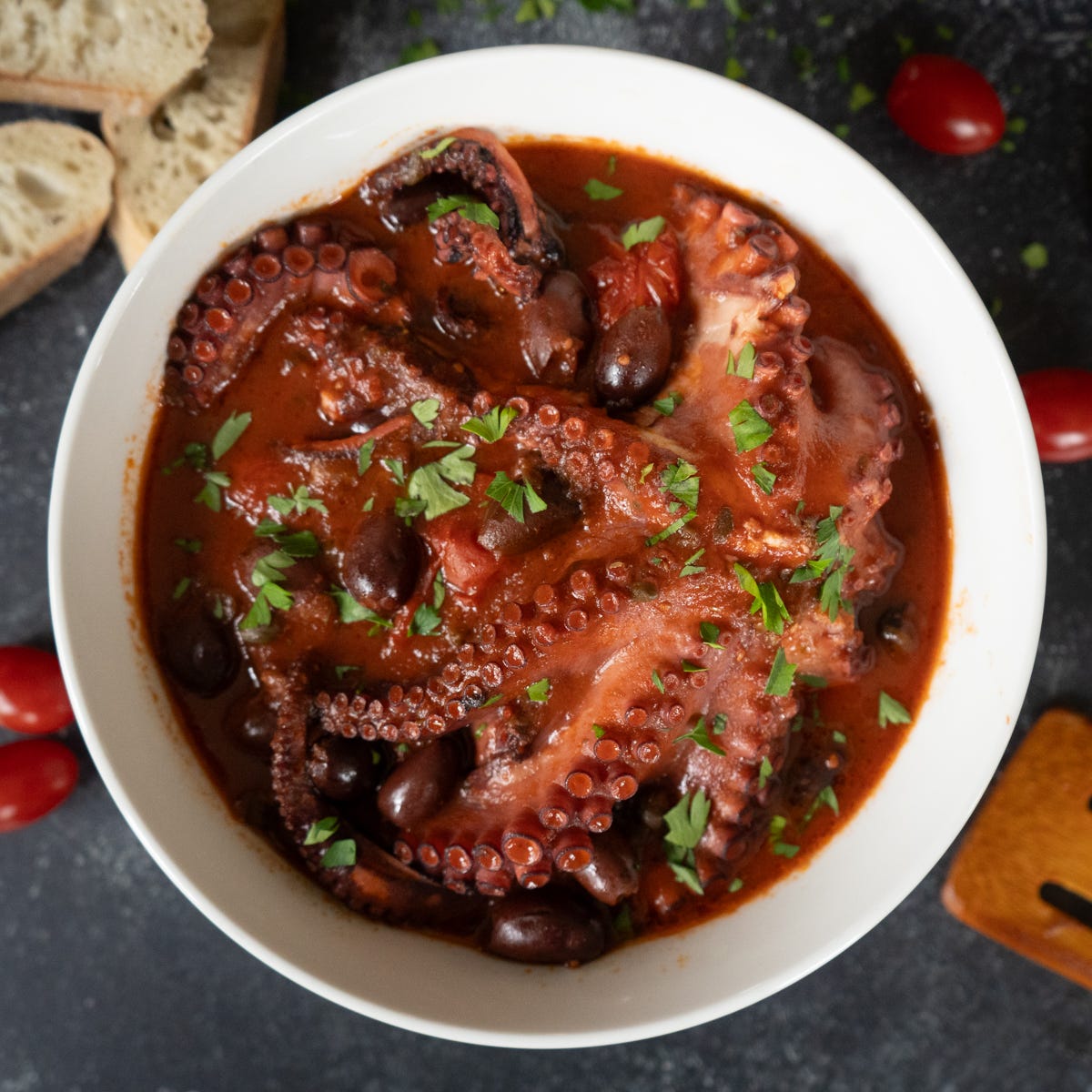


Well, I signed up for spotify, and I am glad.
Spotify playing Italian musci/lyrics is helping me with learning Italian.